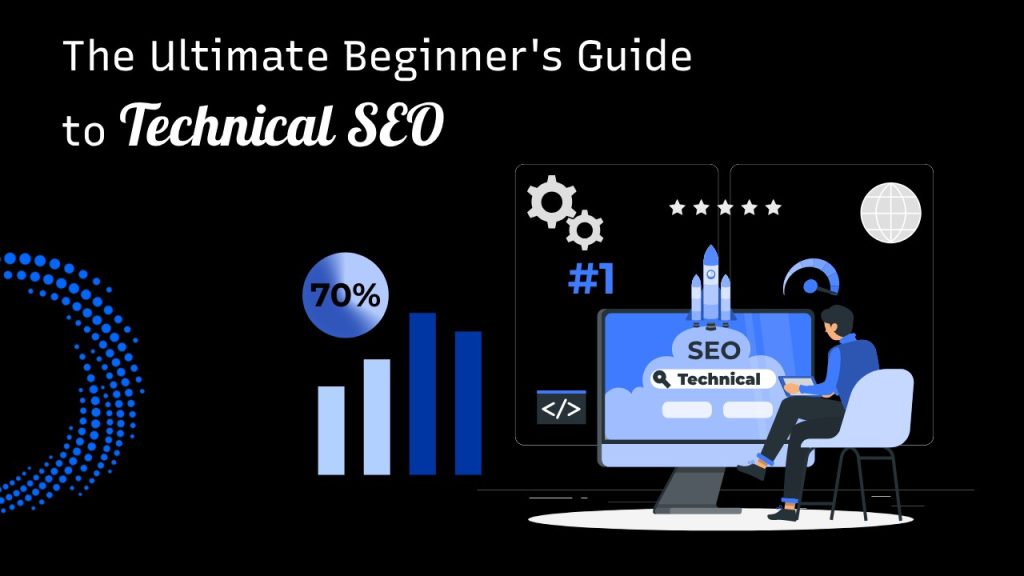In the captivating and steadily developing universe of Website improvement (SEO), there’s a significant subset that frequently gets eclipsed by its keyword-centered partners: Technical SEO. However, it frames the bedrock whereupon an effective SEO strategy is fabricated. This immensely significant gear-tooth in the SEO machine guarantees your website isn’t just perceived via web search tool calculations yet in addition gives an ideal client experience.
Why Technical SEO is Basic
Before diving into explicit systems, it’s critical to comprehend the reason why technical SEO is fundamental. Web crawlers like Google have become progressively modern, however, they need assistance understanding and ordering content. Technical SEO involves strategies that talk straightforwardly to web search tools’ approaches to seeing locales. It’s about the substance as well as about guaranteeing the substance can be found, read, and comprehended via search insects.
Additionally, technical SEO is likewise about client experience. Google has straightforwardly expressed that client experience is a positioning element, and that implies accelerating your website, making it responsive, and guaranteeing it’s safe will help your SEO endeavors. Technical SEO dodges web indexes confounding your webpage – all things considered, it guides them toward a positive valuation.
Center Parts of Technical SEO
1. Site Speed and Execution Streamlining
With the consideration of the Center Web Vitals in Google’s positioning variables, webpage speed, and execution are currently non-debatable for a high-performing website. Page load times straightforwardly influence client experience, with more slow websites seeing higher bob rates and therefore, poor SERP rankings.
Here are moves toward take:
- Limit HTTP demands by lessening the number of components on your page.
- Nonconcurrent stacking of CSS and JavaScript.
- Compacting pictures and CSS records.
- Using program reserving.
- Taking into account a substance conveyance organization (CDN) to serve documents from a server nearer to the guest for quicker stacking.
2. Versatility
With cell phones representing over portion of web traffic worldwide, a dynamic webpage is imperative. Google’s portable first ordering infers the versatile adaptation of your website is the benchmark for how it positions.
3. SSL/HTTPS
Protecting your site with an SSL (Secure Attachments Layer) endorsement is central. It encodes information moved between your site and its clients, safeguarding touchy data. Besides the fact that it fabricates client trust, yet beginning around 2014 Google has been involving HTTPS as a positioning sign.
Establishment steps frequently include:
- Buy and introduce an SSL endorsement through your facilitating supplier.
- Set up the HTTPS divert to guarantee all guests land on the safe adaptation of your site.
- Update inside joins, sitemaps, and standard labels to mirror the HTTPS URLs.
4. Perfect, Organized URL Design
Web indexes favor URLs that are expressive and simple to understand. URLs act as a minor positioning variable and essentially add to the client experience. Tips for URL advancement:
- Utilize lowercase letters, and runs rather than highlights, and guarantee they are compact and illustrative.
- Keep away from extended inquiry strings and various boundaries.
- Guarantee that your site’s URL structure is progressive and mirrors the site’s association.
5. XML Sitemaps
XML sitemaps act as an outline to let web search tools know content accessible and how to arrive at it. While it doesn’t support your rankings, it assists web indexes with creeping your webpage all the more successfully. While creating sitemaps, think about the accompanying:
- Utilize a sitemap generator or CMS module to make one.
- Try not to incorporate index pages.
- Stay up with the latest and submit to find out about Search Control Center and Bing Webmaster Apparatuses.
Utilizing Technical SEO to Its Fullest
Having furnished yourself with a comprehension of these crucial parts of technical SEO, the subsequent stage is execution. Influence the assortment of SEO devices accessible like Shouting Frog, Moz, SEMrush, Ahrefs, and Google’s Set-up of apparatuses (Search Control Center, PageSpeed Bits of Knowledge, Dynamic Test).
Proactively leading technical reviews can assist you with spotting issues before they negatively influence your site’s presentation. The review ought to direct your SEO strategy, offering a make way to tend to every technical component referenced previously.
Furthermore, stay informed concerning Google’s always-changing calculations and SEO best practices. Remaining informed is basic in this powerful field, where the previous advancement is the present standard practice. Keep in mind, that the technical side of SEO isn’t simply a one-time arrangement but a constant course of enhancement and refinement.
Conclusion
Technical SEO may not be pretty much as impressive or clear as creating eye-getting content or connecting with virtual entertainment posts. In any case, it is similar, while perhaps not more, significant. It shapes the establishment whereupon any remaining SEO endeavors are constructed.
By merging technical ability with key substance creation and progressing streamlining, you can open the maximum capacity of your web-based presence. Begin today, refine your way of dealing with technical SEO, and watch your website climb the positions, carrying with it expanded perceivability, traffic, and at last, achievement.
FAQs:
What is Technical SEO?
Technical SEO alludes to the method involved with enhancing your website for the slithering and ordering stage. It’s about aiding web crawlers to decipher and list your website really, without experiencing any issues or hiccups.
How does a decent site structure benefit SEO?
An efficient site structure assists web search tools with understanding your substance setting better and prompts more compelling creeping and ordering. It additionally adds to further developing the client experience, making your site more easy to understand and simpler to explore.
Which job does Diagram Markup play in SEO?
Pattern Markup, or organized information, helps web search tools understand your website’s substance all the more. This can prompt the age of upgraded results or rich scraps, which can further develop navigate rates.



